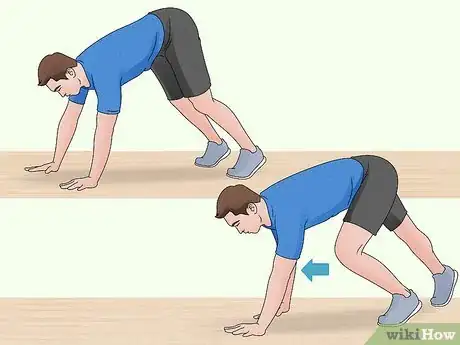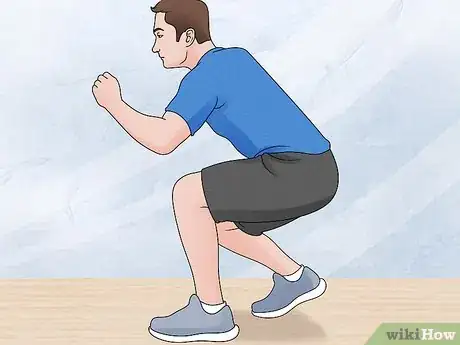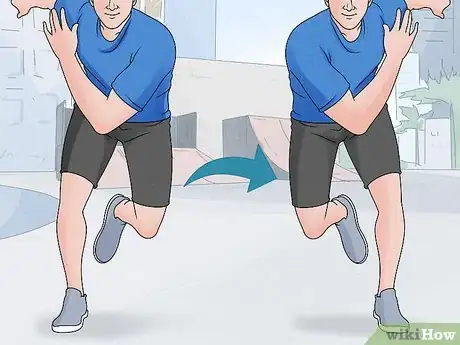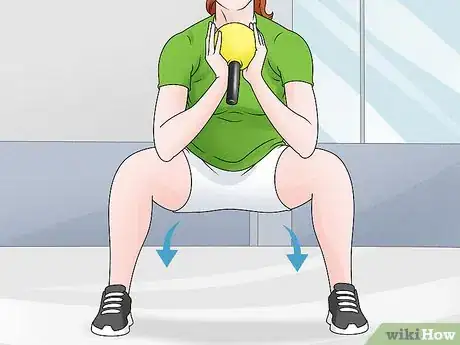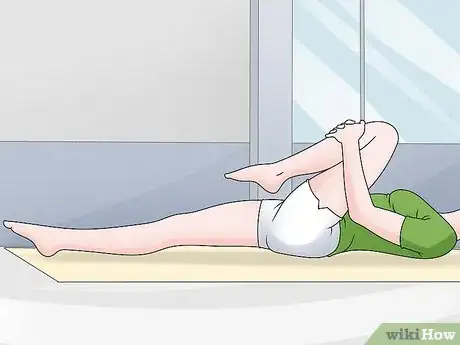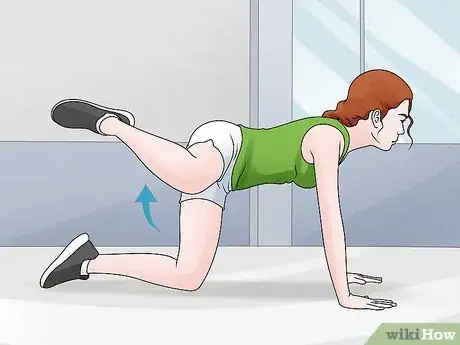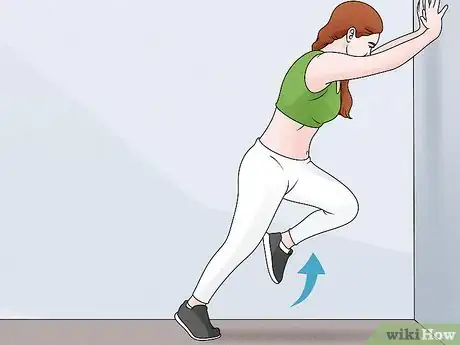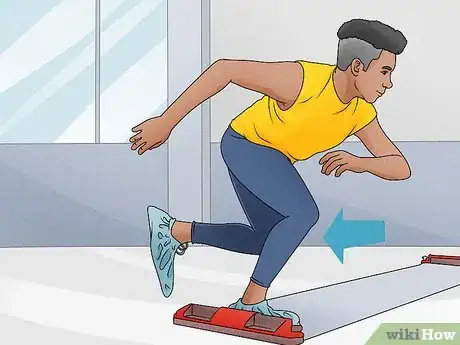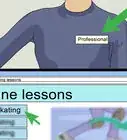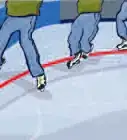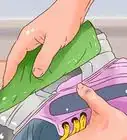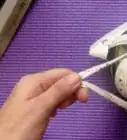This article was co-authored by wikiHow staff writer, Hunter Rising. Hunter Rising is a wikiHow Staff Writer based in Los Angeles. He has more than three years of experience writing for and working with wikiHow. Hunter holds a BFA in Entertainment Design from the University of Wisconsin - Stout and a Minor in English Writing.
There are 13 references cited in this article, which can be found at the bottom of the page.
This article has been viewed 20,044 times.
Learn more...
Hockey is such an exciting and fast-paced sport to play, but it can be a little difficult to chase after the puck if you have an inefficient stride. Even if you aren’t able to get on the ice to practice, there are a few things you can do outside of the rink to develop your form. We’ll guide you through a variety of exercises to try so you can build up strength, flexibility, acceleration, and balance for when you get back on the ice!
Steps
Crawls
-
Train your core and hips with crawling drills. Drop down on your hands and knees to get into the starting position. Keep your arms straight so your hands are planted on the ground below your shoulders. Press your toes into the ground and lift your knees up, but keep them slightly bent. Take a step forward and slowly crawl across the floor. Try your best to keep your core completely still to get the most out of your workout.[1] X Research source
- Start off by crawling 15–30 feet (4.6–9.1 m) for a rep, and repeat it 3 times.
- For more of a challenge, try going backward or attaching a chain to a weight belt and dragging it behind you.
- Crawling simulates the motions you take during your skating stride.
Hockey walks
-
Squat while walking to strengthen your quads and hips. Plant your feet shoulder-width apart and bend your knees to 90 degrees so your thighs are parallel to the floor. Keep your back straight and look forward. Then, walk forward while you’re crouched to really feel the burn in your quads and glutes.[2] X Research source Aim to walk 25–30 yards (23–27 m) before taking a short 10- to 30-second break.[3] X Research source
- See how many times you can repeat this exercise in a 10-minute span.
Side lunges
-
Take big steps out to the side to improve your stance and power. Begin the exercise with your feet shoulder-width apart. On your first rep, take a wide step out to the side with your left leg and bend your knee until it’s at a 90-degree angle. Keep your other foot firmly planted on the ground. Dip down into a squat, keeping your back straight. Push off of your left foot to go back into your starting position. Repeat the exercise with your right leg to complete a rep.[4] X Research source
- Try starting with 2–3 sets that are each 8–10 reps. As you get used to the exercise, try bumping your sets up to 25–30 reps.
- You can do side lunges with your bodyweight or while you’re holding onto dumbbells.
- The lateral movements of a side lunge mimic how you push off of your feet while you’re skating.
Lateral bounds
-
Jump from one leg to the other for explosive power in your quads. Start in a squat position with your feet firmly planted on the ground shoulder-width apart. Shift your weight onto your left foot and lift your right foot off the ground. Push off of the left foot and straighten your leg so your body moves to the side at a 45-degree angle. Land on the ball of your right foot, keeping your left foot off the ground, and immediately crouch down so your knee is bent to 90 degrees. Continue jumping back and forth, switching legs each time, to complete a set.[5] X Research source
- Aim to do around 5 reps on each leg for a total of 4 sets.[6] X Research source
- You can do lateral bounds in one spot or try moving forward each time you change your legs. This can help train the muscles on the sides and back of your hips even more.
Squat jumps
-
Jump straight up after doing a squat for an intense power exercise. Stand with your feet shoulder-width apart and your hands on your hips. Bend your knees until they’re at 90-degree angles, keeping your back and neck straight. As soon as you get into the squat position, quickly straighten your legs and jump straight up off the ground to finish a rep.[7] X Research source
- Try to do at least 3 sets that are each around 5–8 reps.
Goblet squats
-
Hold a dumbbell vertically while you squat to strengthen your hips and core. Stand with your legs spread shoulder-width apart. Hold a dumbbell or weight vertically against your chest with both hands. Keep your back straight and abs tight as you bend your knees so your thighs are parallel with the floor. Hold the position for 1 count before straightening your legs back up.[8] X Research source
- Try to do 3 sets that are 5–8 reps apiece.
- If goblet squats aren’t challenging enough, lift one of your legs off the ground before squatting down.[9] X Research source
Knee-to-chest stretches
-
Pull your knee up to your chest to open up your hips. Lie flat on your back with your legs fully extended. Pull your right knee up toward your chest and push it as close to your body as you can and hold it for 1 count. Keep your knee bent, but move it to the right so it nearly touches the ground. Then straighten your leg back to the starting position.[10] X Research source
- Repeat the stretch 2–3 times with each leg.
- This stretch targets the hip muscles you use so you have a wider and more powerful stride.
Fire hydrants
-
Increase your hip mobility by lifting your leg up to the side. Get on your hands and knees, keeping your back straight and your eyes fixed forward. Place your hands below your shoulders and your knees directly underneath your hips. Engage your core so it doesn’t move. Then, raise one of your knees up to your side. You should look like a dog raising its leg next to a fire hydrant. Hold the position for 2 counts before slowly lowering your leg back to the ground.[11] X Research source
- Repeat the exercise 8 times with each leg for a total of 3 sets.
- This workout stabilizes your hips so you can get wider strides while you’re skating.
Bulgarian split squats
-
Elevate your back leg while squatting for better hip flexibility. Put a chair or plyo box behind you. Hold dumbbells in your hands with arms straight down at your sides. Place one of your feet on the chair behind you so your heel points toward the ceiling. Slowly bend your other knee to 90 degrees to lower your body into a lunge position. Hold the position for a count before straightening your leg and returning to your starting position.[12] X Research source
- Aim to do 5 reps on each leg for 3 sets.
- This exercise also helps improve your balance on 1 leg after you push off of the ice during your stride.
Wall acceleration drills
-
Support yourself against a wall and drive your knees to your chest to accelerate faster. Place your hands on a wall and position your body so it’s at a 45-degree angle with the wall. Stand on the balls of your feet and lift your left leg so your knee moves up toward your chest. Then, quickly drive your left leg down. As soon as you touch the ground with your left foot, lift your right knee up to your chest.[13] X Research source
- Repeat this exercise in cycles of 3. For example, you can do left-right-left or right-left-right.
Sprints
-
Boost your acceleration by doing running drills as fast as you can. Start with your feet staggered and crouch down so your weight is on your front leg. As soon as you’re ready, push down on your front leg to explode forward and start your sprint. Lean forward and keep your shoulders low at the beginning, but gradually straighten your body as you finish the sprint. Aim to go around 20 yards (18 m) before resting.[14] X Research source
- Try to do 2–3 sprints with a 30-second rest in between.
Single-leg balances on roller blades
-
Improve your stability by gliding on a single roller blade. Put on your roller blades and find a smooth, flat patch of ground. Shift your weight onto your right leg and keep your knee slightly bent. Push off of the ground with your left foot and lift it up so you’re only rolling on one roller blade. Try to glide forward and maintain your balance for as long as you can. Alternate your legs so you can practice with both.[15] X Research source
- Aim to do 2–3 reps with each leg.
- Try balancing on 1 leg while you roll backward since you’ll have to skate that way in actual hockey games.
Slide board strides
-
Mimic your skating stride on the slide board to nail your form. Put on the shoe covers that come with your slide board so you can slip back and forth. Stand in the middle of the slide board with your knees slightly bent. Push off with one foot and balance on your other leg while you slide to the end of the board. Once your foot hits the end of the board, straighten your leg to push off so you’re sliding on your other foot. Keep striding back and forth to perfect your stride.[16] X Research source
- Slide boards are made from slippery plastic that has a similar feeling to ice, and you can buy them online for around $200 USD.
Warnings
- Schedule 1 or 2 rest days where you don’t exercise so you don’t feel fatigued.[19] X Research source⧼thumbs_response⧽
You Might Also Like

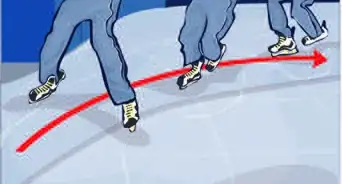
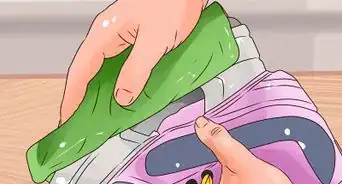
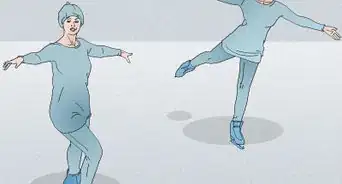
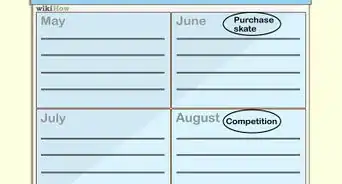
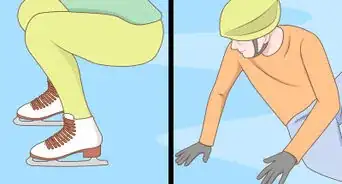

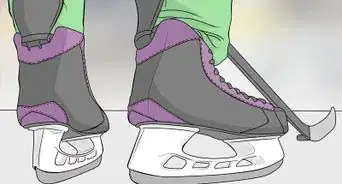
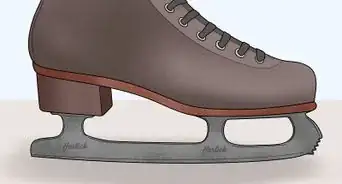
References
- ↑ https://www.stack.com/a/hockey-hips-exercise
- ↑ https://youtu.be/5ivEmuNKtlE?t=81
- ↑ https://www.icehockeysystems.com/content/lunges-skate-walks-skate-jumps
- ↑ https://youtu.be/s_WXyQUc8lo?t=112
- ↑ https://cdn.hockeycanada.ca/hockey-canada/Hockey-Programs/Players/Downloads/2018/off-ice-hockey-training-manual-level-1-e.pdf
- ↑ https://www.stack.com/a/skating-speed-exercises
- ↑ https://cdn.hockeycanada.ca/hockey-canada/Hockey-Programs/Players/Downloads/2018/off-ice-hockey-training-manual-level-1-e.pdf
- ↑ https://youtu.be/Elx2y-Qb1nM?t=62
- ↑ https://youtu.be/q1TuasYdM2M?t=01
- ↑ https://cdn.hockeycanada.ca/hockey-canada/Hockey-Programs/Players/Downloads/2018/off-ice-hockey-training-manual-level-1-e.pdf
- ↑ https://www.stack.com/a/skating-speed-exercises
- ↑ https://www.stack.com/a/skating-speed-exercises
- ↑ https://cdn1.sportngin.com/attachments/document/0013/1708/Off_ice_quickness_program.pdf
- ↑ https://cdn1.sportngin.com/attachments/document/0013/1708/Off_ice_quickness_program.pdf
- ↑ https://youtu.be/ODF5dtshjBU?t=75
- ↑ https://youtu.be/T8eqAi9cbGU?t=89
- ↑ https://www.stateofhockey.com/news_article/show/934545-six-keys-to-improve-skating-speed-and-efficiency
- ↑ https://cdn.hockeycanada.ca/hockey-canada/Hockey-Programs/Players/Downloads/2018/off-ice-hockey-training-manual-level-1-e.pdf
- ↑ https://orthoinfo.aaos.org/en/staying-healthy/safe-exercise/
About This Article

